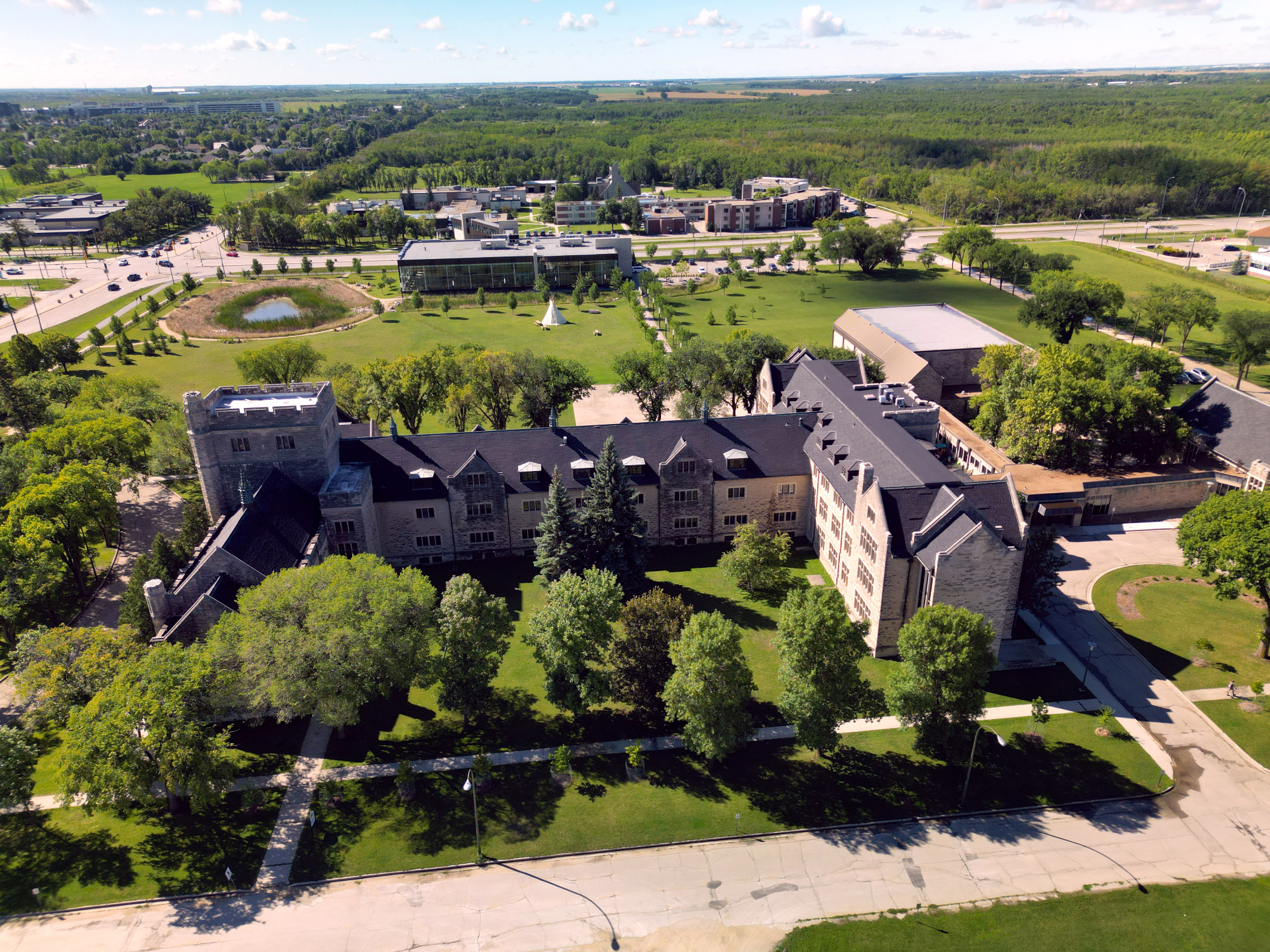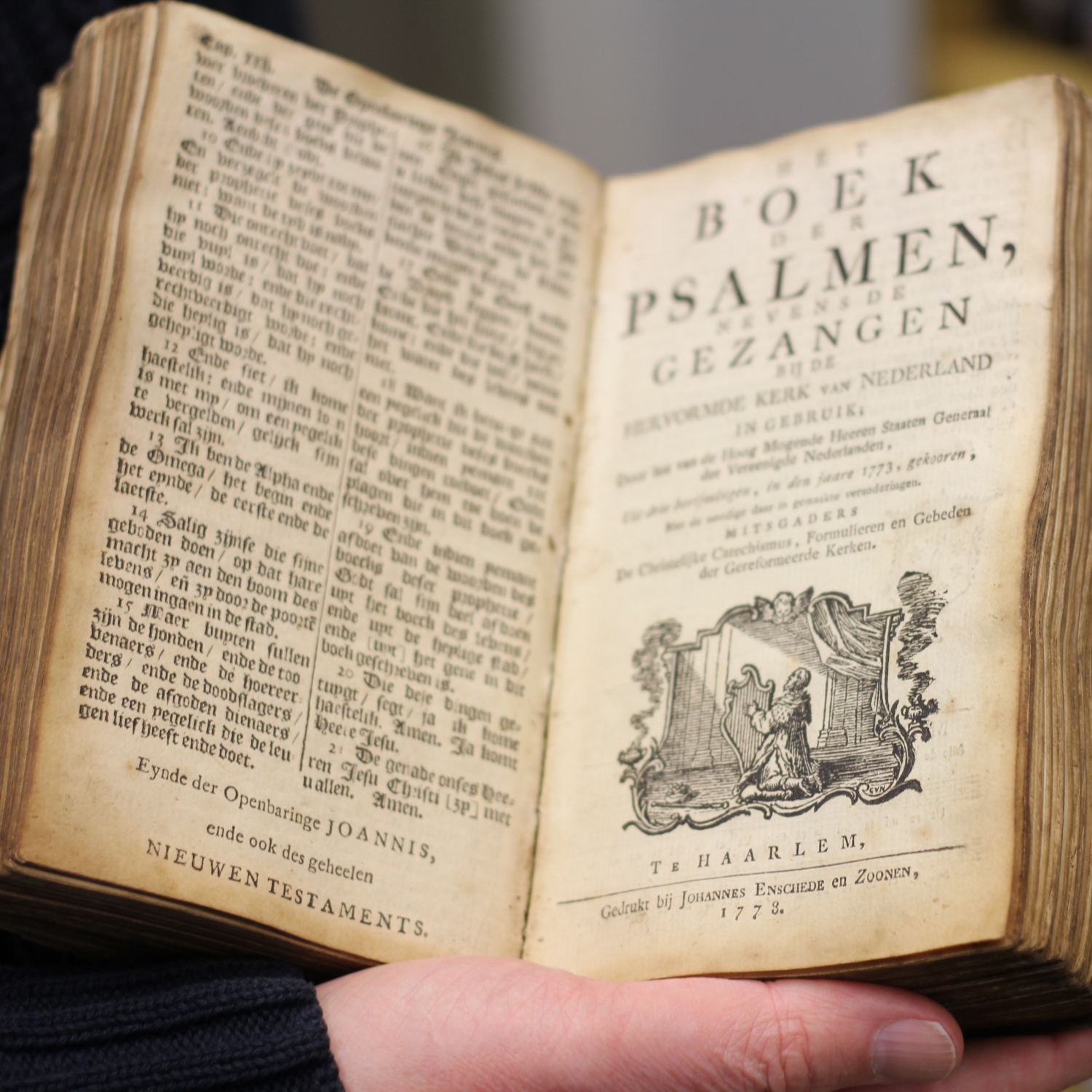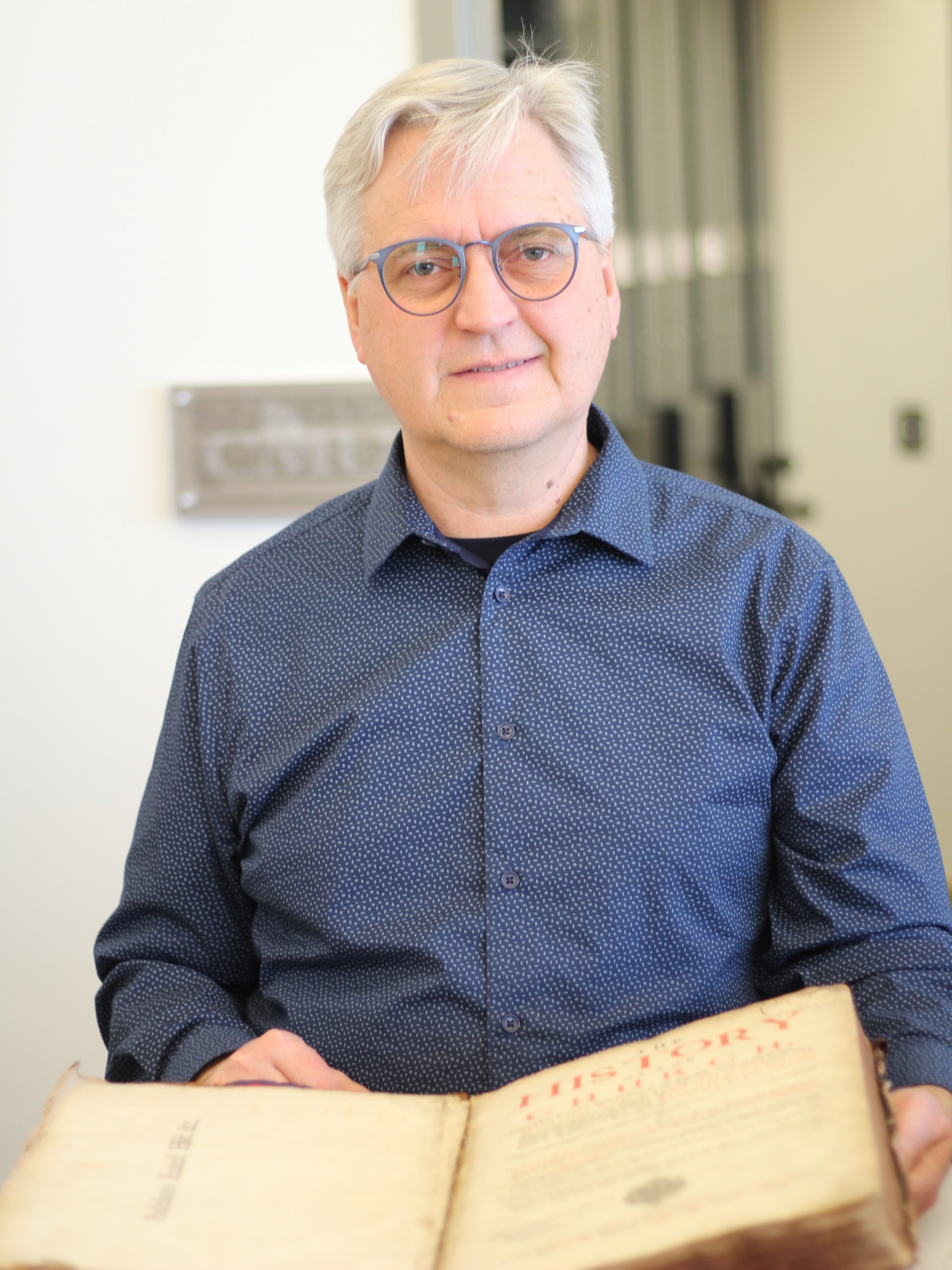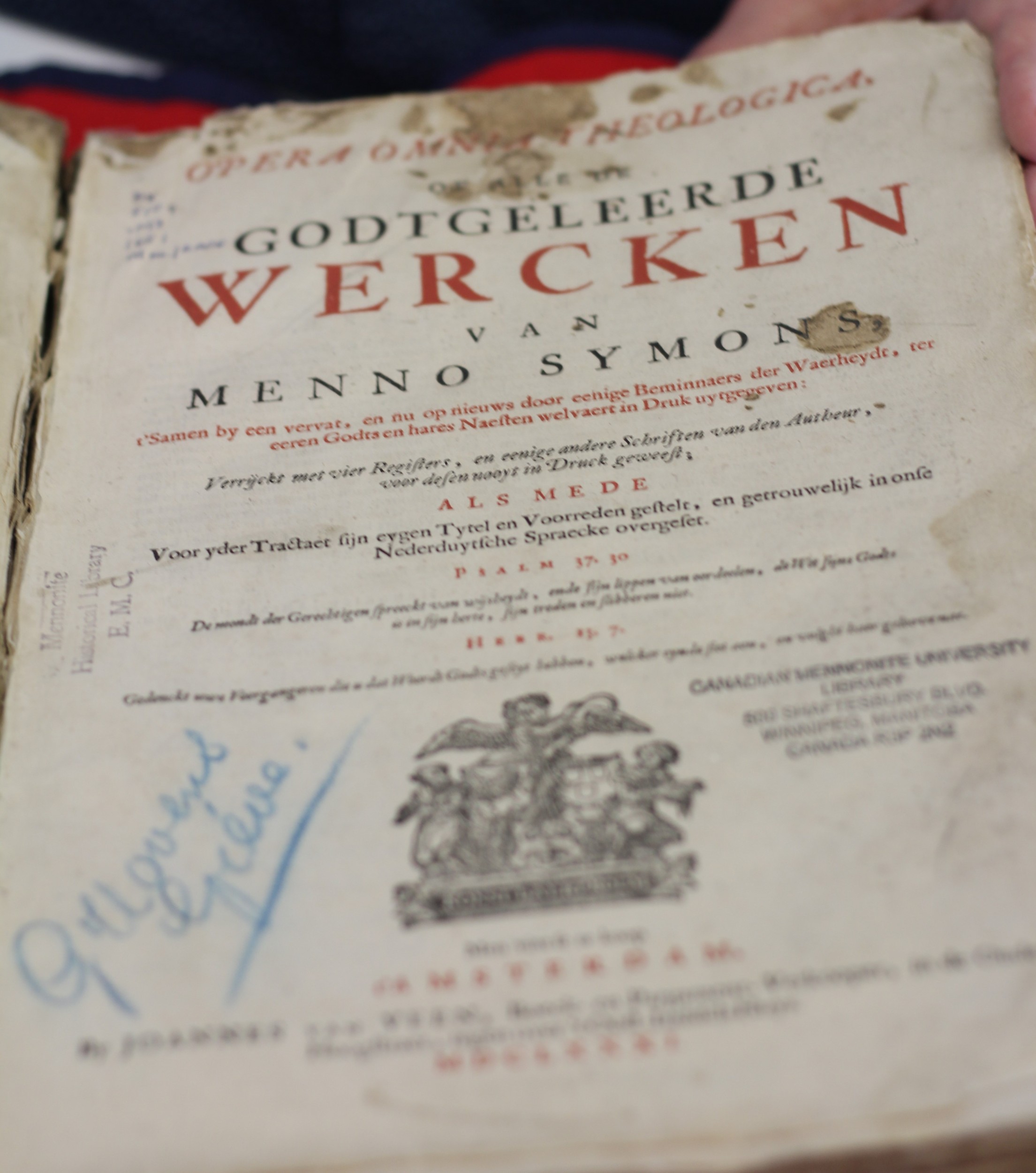News and Releases

Stories
Step inside CMU’s special collections room
Monday, July 29, 2024 @ 3:35 PM | Stories
 CMU's rare book collection features over 135,000 items, the oldest dating back to 1681.
CMU's rare book collection features over 135,000 items, the oldest dating back to 1681.
Step inside the doors of Canadian Mennonite University's (CMU) library, and you'll find yourself at the institution's heart. Each shelf holds stories of the past, present, and future, ready to be explored. The CMU library is more than just a resource; it's a place where curiosity thrives and community bonds are strengthened.
Over 135,000 items are in CMU's collection, but a significantly smaller subset sits in the special collections room. It's a place where Professor of English Paul Dyck says the utility and value of printed books will remain eternal.
"A rare books room in a university library has to balance use and conservation. You're not trying to simply keep the books hermetically sealed and simply conserve them. You want to conserve them for academic purposes," says Dyck.
Holding a particularly gothic-looking hymnal, Dyck explains that damage to the books is inevitable almost every time they are used, so the goal should be to minimize that damage by educating students on handling the materials.
Dyck teaches a course called The History of the Book, in which students explore beyond a book's content and study its context within the time of its printing and the historical economics of publishing.
 Dr. Paul Dyck, Professor of English, shows off part of CMU's rare book collection.
Dr. Paul Dyck, Professor of English, shows off part of CMU's rare book collection.He often uses the special collections room as a resource for his students in the class, showing them how to handle and move the books in a safe way so they (and future students) can use the books for assignments and research on uncommon but valuable topics. These books, explains Dyck, "are not art objects; they are for use."
Some books, dating back to 1681 and made from handbound animal skin, are one-of-a-kind and decidedly singular, while others, Dyck admits, are contextually valuable.
Dyck points out an exceptionally aged book of German hymns and says, "I think there's also a cultural sentimentality behind the value of books because a book like this seems a lot more valuable to an institution like CMU as compared to others."
The books come from all over the world and have various histories, topics, and stories that support CMU's mission and vision. "It's part of the intellectual heritage of the university," Dyck says of the interdisciplinary amalgamation of the collection.
The oldest book in the collection is The History of the Church by Eusebius of Caesarea. It is a chronological account of the development of Early Christianity from the first to the fourth centuries.
Peppered with insect damage, tobacco stains, and dog-eared pages, the book undoubtedly has a long history as an object of use. For hundreds of years, people have sifted through its pages, poured over its analysis of the early church, and, as Dyck says, just like how we treat our modern-day tools of cellphones and tables, probably thrown around a little bit.
 From the special collections room: Godtgeleerde Wercken by Menno Simons.
From the special collections room: Godtgeleerde Wercken by Menno Simons.The books come to the collection through various streams and channels. Sometimes, professors with a fascination for history will browse auction websites for hidden gems. Other times, researchers and colleagues from different universities will find something of interest in rare bookstores and make recommendations to CMU.
Other times, the books are donated. Recently, renowned Canadian author and CMU alumnus Rudy Weibe donated over 600 books, journals, and ephemera to the CMU library. This vast gift helps sustain the library's mission and bring new and extensive resources to the community.
In 2019, Weibe won the CMU PAX Award for his critical impact on the Canadian literary landscape. "Wiebe's novels draw admirably on the character and tenets of the Mennonite faith tradition," said CMU President Dr. Cheryl Pauls at the time. "His writing demonstrates the gift of the imagination of the church in delightful and astonishing ways."
Not all the material in Weibe's collection will necessarily make it through the special collections room threshold, but its impact on the library's broader holdings is invaluable.
Dyck says all the rare and unique books in CMU's care are for posterity, and it's the responsibility of the library to retain their endurance. While some of the collections' books have been scanned for digital, a scant few exist only in the physical form.
"So many good resources are available online, but there's something about the studiousness of coming to the library and working with a printed book that remains important. The only thing about a printed book is that it's a dedicated, technological thing; once you print on paper, you're committing," says Dyck.
But it's not as though digital and material are at odds, explains Dyck. "In fact, one of the problems that the archives have had is that with the explosion of digitizing technologies, there's been a much bigger interest in what's in the archives and the physical books there. So, actually, there's a kind of conservation problem. If all of a sudden, you've got two or three times more people coming and using the books, they could wear them all out. So, it's actually not a problem of the old book becoming obsolete."
KEYWORDS: library, rare books, English, Paul Dyck, Rudy Wiebe

 Print This Article
Print This Article